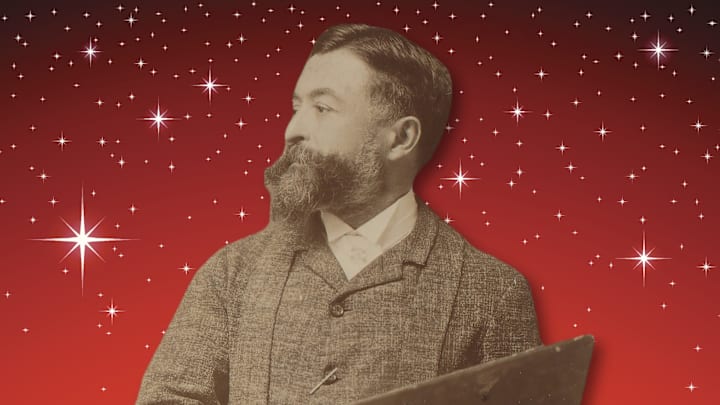December is filled with images of a jolly old man, snowy haired and round-bellied, wearing a red suit trimmed with white fleece. He’s become a symbol of festive gift-giving, shown often at his home in the North Pole or sitting on a sleigh driven by his loyal reindeer.
But the Santa Claus we know today would have been unfamiliar before the mid-19th century. So how did this particular image of Old Saint Nick come to take shape? The answer lies partially in the work of a cartoonist who was otherwise best known for his work in a very different field.
From Civil War to Santa Claus
The illustrator Thomas Nast, born in 1840, is perhaps America’s most famous political cartoonist. Among other things, he has been credited with the visual association of donkeys with Democrats and elephants with Republicans, and was praised by Abraham Lincoln for his support of the Union in his cartoons during the Civil War.
But another of the most enduring parts of his legacy as an illustrator comes in the form of the figure who is most associated with Christmas: Santa Claus. Nast first drew him for the January 3, 1863, edition of Harper’s Weekly. His image, which included elements from the 1823 poem “A Visit From St. Nicholas” and the cartoonist’s German heritage, showed Santa visiting a Union Army camp to deliver gifts to soldiers. From then until 1886, Nast contributed yearly illustrations of Santa to the magazine—and in the process, did a great deal to cement many aspects of the Santa legend in the popular imagination.

Before Nast, Santa often wore tan; it was the cartoonist’s work that began to shift this perception and popularize the red suit that endures to this day. He also created the image of a plump Santa with a large stomach (“A Visit From St. Nicholas,” a source of inspiration for Nast’s Santa, distinctly describes Santa as having “a little round belly”).
Nast influenced more about Kris Kringle than just his appearance. He decided that Santa lived at the North Pole, and also gave him a helpful crew of elves. And though Nast’s cartoons didn’t originate the idea of flying reindeer, his inclusion of the magical beasts in his illustrations did help make their association with Father Christmas more popular. His version of Santa became more and more widespread as people who created and sold Christmas cards in the 1870s and ‘80s drew upon his images for their own creations.
You May Also Like ...
- Why Does Santa Claus Live at the North Pole?
- Why Are Red and Green the Colors of Christmas?
- How Did Elves Become Part of Christmas?
Add Mental Floss as a preferred news source!
A Lasting Legacy
Nast’s interest in politics and Santa sometimes became intertwined. In addition to his first cartoon showing Santa visiting soldiers, a famous image from 1881 is sometimes credited as one of the most influential portraits of the magical man. In it, a smiling Santa with a full, white beard puffs a long pipe. He carries an armful of goods, including a doll and a toy horse. But the picture also carried a subtext: It was loaded with symbols related to the military, and was intended to support a campaign at the time to increase the wages of those serving in the army and navy.

Nast had created more than 30 images of Santa for Harper’s Weekly by the time he resigned in 1886. After leaving the magazine, he increasingly struggled to find work as an artist. He was still held in high esteem for his political engagements, though: Theodore Roosevelt appointed him as a diplomat to Ecuador in 1902. Sadly, Nast died of yellow fever only a few months after his arrival in the country.
While his diplomatic career may have been short, his legacy as an artist endures through the wealth of cartoons that survive to this day—and in the very image of Santa Claus as we know him.
A version of this story originally ran in 2022; it has been updated for 2025.
